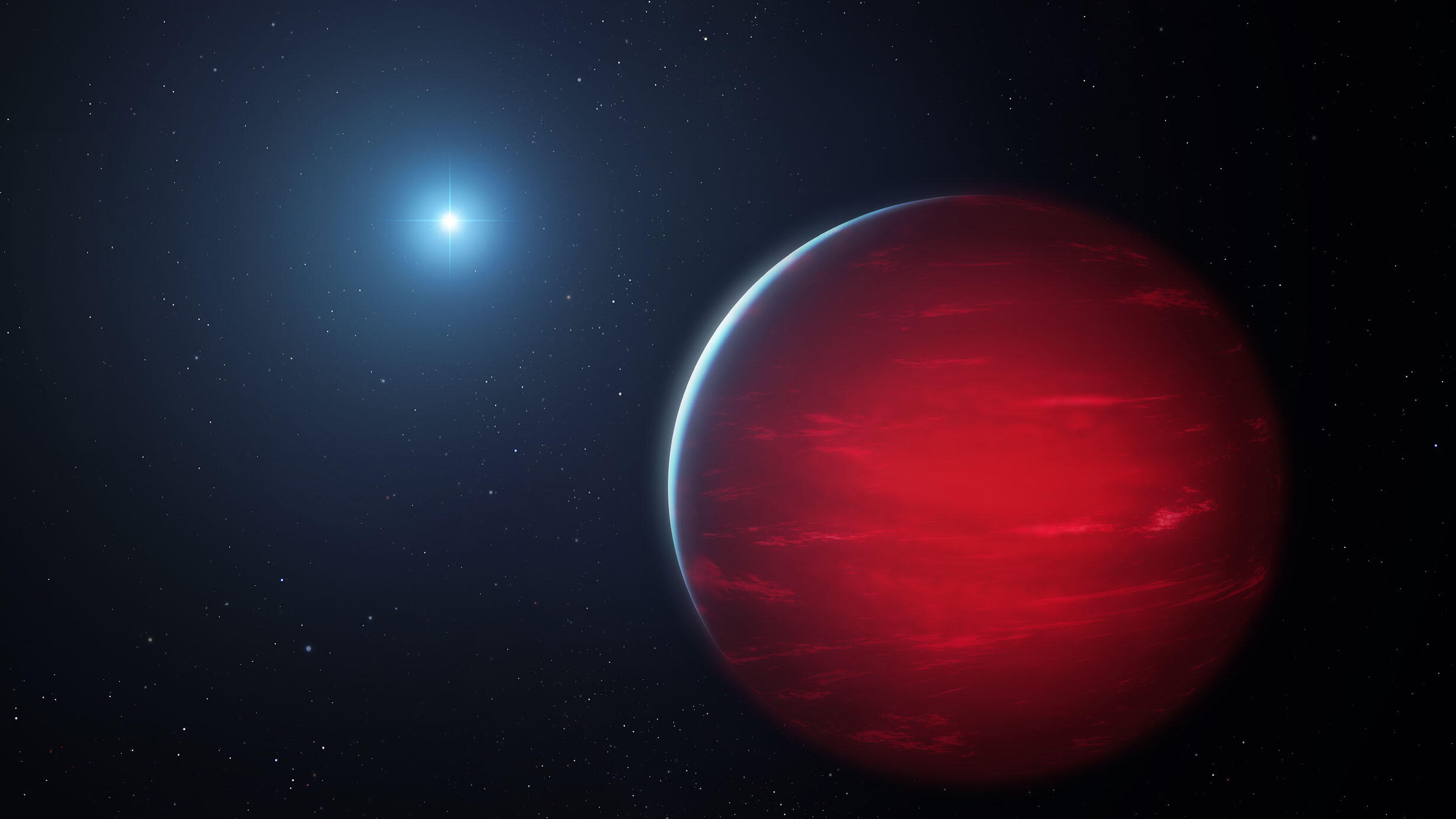More than 30 Brown Dwarf Binaries Discovered by Backyard Worlds “Super User”
by AMNH on
by AMNH on
 Illustration of an ultracool dwarf with a companion white dwarf.
Illustration of an ultracool dwarf with a companion white dwarf.A citizen scientist backed by researchers from a wide variety of academic institutions, including the Museum, has discovered 34 “ultracool” dwarfs, also known as brown dwarfs, moving through space and co-evolving with higher-mass companions.
Brown dwarfs are star-like, with more mass than planets but less mass than stars, which makes them much harder to spot.
“Brown dwarfs are everywhere, but they are very difficult to identify,” said Jackie Faherty, a senior research scientist in the Museum’s Department of Astrophysics and a co-author on the new study. “They resemble cooling embers—their low mass, low temperature, and lack of internal nuclear reactions make them extremely faint.”
The question of how often stars exist alone is an enduring question in the field of astronomy, and for brown dwarfs, the answer to this question is especially elusive.
Data from sensitive instruments on mid-sized to large telescopes have allowed for the discovery of several thousand brown dwarfs, but only a small subset have been identified as binaries, those traveling with a companion.
To help find brown dwarfs, astronomers from the Backyard Worlds: Planet 9 citizen science project, co-founded by the Museum in 2017, have previously tapped a worldwide network of more than 100,000 volunteer citizen scientists who inspect telescope images to identify the subtle motion of brown dwarfs against background stars.
Among these volunteers, a few hundred “super users” perform self-directed research projects. In this study, one such super user, citizen scientist Frank Kiwy, turned to the National Science Foundation’s NOIRLab’s catalog of 4 billion celestial objects, known as NOIRLab Source Catalog DR2.
“I love the Backyard Worlds: Planet 9 project! Once you master the regular workflow you can dive much deeper into the subject,” said Kiwy. “If you're a person who is curious and not afraid to learn something new, this might be the right thing for you.”
By searching the data for objects with the color of brown dwarfs, Kiwy found more than 2,500 potential ultracool dwarfs. Of these, he found 34 systems comprised of a white dwarf or low-mass star paired with an ultracool dwarf companion. Kiwy—guided by Faherty and BYW co-founder Aaron Meisner—then led a team of professional astrophysicists in publishing the findings.
These discoveries could help astronomers determine if brown dwarfs are more akin to oversized planets or undersized stars, as well as providing insights into how star systems evolve over time.